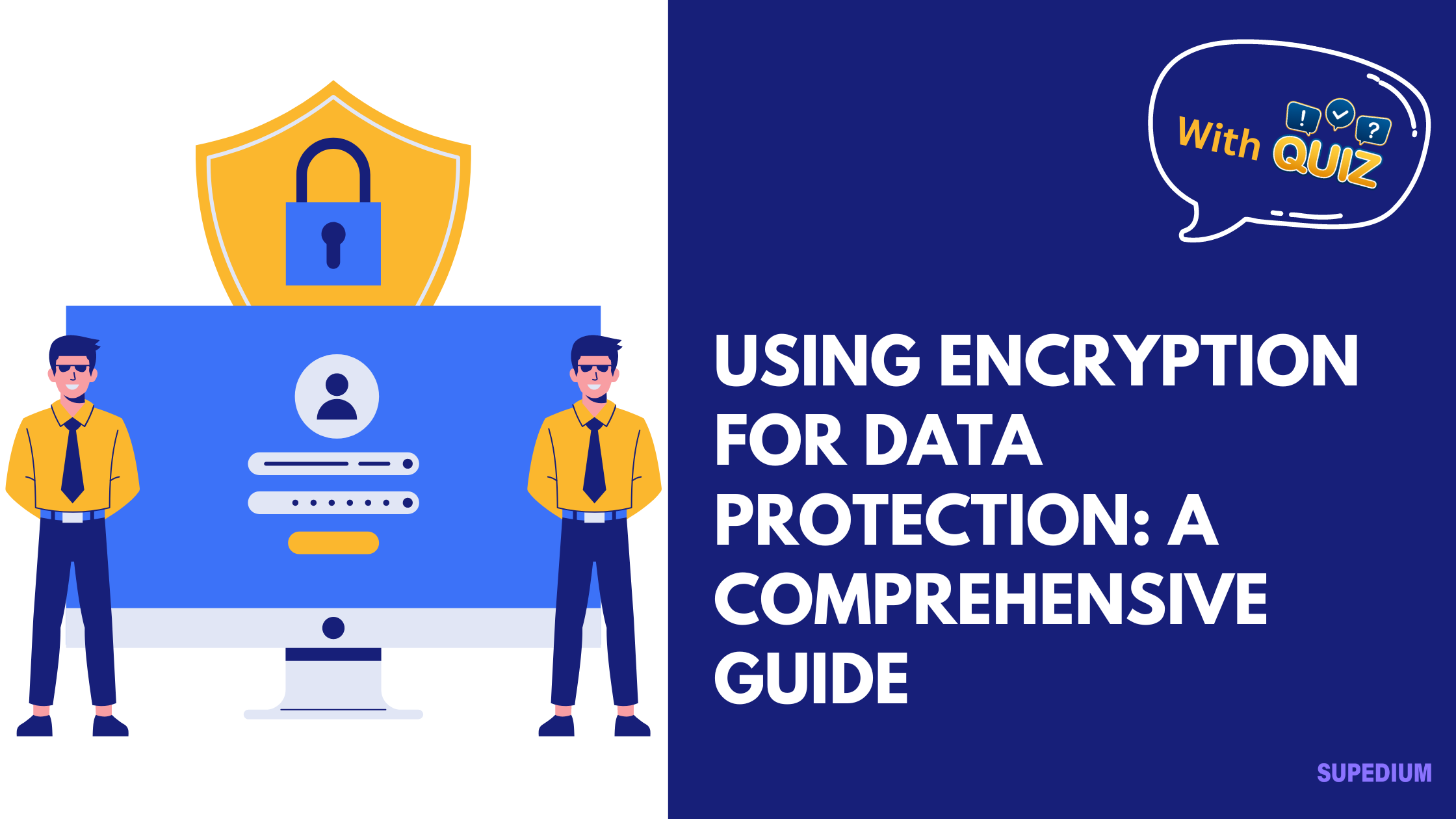Table of Contents
![]()
In the modern digital landscape, safeguarding sensitive information has become paramount. Encryption stands at the forefront of data protection strategies, providing a robust defense against unauthorized access and ensuring that data remains secure. This article delves into the intricacies of encryption, exploring its fundamental concepts, applications, standards, and future trends.
I. Introduction
Definition of Encryption
Encryption is a process that converts plaintext into ciphertext, a scrambled format that is unreadable without a decryption key. This technique is essential for protecting data from unauthorized access. By using encryption, organizations can ensure that even if data is intercepted or accessed unlawfully, it remains unreadable and secure.
Importance of Data Protection
In an era where data breaches and cyber-attacks are increasingly common, protecting data is crucial. Unprotected data can be exploited by malicious actors, leading to significant financial and reputational damage. Encryption mitigates these risks by ensuring that data remains confidential and intact, even if it falls into the wrong hands.
Overview of Encryption’s Role in Data Protection
Encryption secures data both at rest (stored data) and in transit (data being transferred). By encrypting data, organizations can safeguard sensitive information such as personal identification details, financial records, and proprietary business information from unauthorized access and breaches.
II. Basic Concepts of Encryption
Encryption Terminology
- Plaintext: The original, readable data before encryption.
- Ciphertext: The encrypted, unreadable data produced after encryption.
- Encryption Algorithm: The mathematical procedure used to encrypt and decrypt data.
- Key: A piece of information used by the encryption algorithm to perform the encryption or decryption process.
- Decryption: The process of converting ciphertext back into plaintext using a decryption key.
Types of Encryption
- Symmetric EncryptionSymmetric encryption uses a single key for both encryption and decryption. The key must be kept secret, as anyone with access to the key can decrypt the data. Examples include the Advanced Encryption Standard (AES) and Data Encryption Standard (DES). Symmetric encryption is efficient for large volumes of data but requires secure key management.
- Asymmetric EncryptionAsymmetric encryption, also known as public-key cryptography, uses two keys: a public key for encryption and a private key for decryption. The RSA algorithm and Elliptic Curve Cryptography (ECC) are notable examples. This method enhances security by eliminating the need to share a single key, though it can be slower than symmetric encryption.
Key Management
Effective key management is critical for maintaining encryption security. It involves generating, storing, and distributing keys securely. Proper key management practices prevent unauthorized access and ensure that keys are rotated and updated regularly to maintain security.
III. Applications of Encryption
Data at Rest
Data at rest refers to data stored on physical media such as hard drives or cloud storage. Encrypting data at rest ensures that it remains protected even if the storage device is lost or stolen. Best practices include encrypting files, databases, and entire storage volumes.
Data in Transit
Data in transit is data being transmitted across networks. Encrypting data in transit prevents eavesdroppers from intercepting and deciphering the information. Protocols such as Transport Layer Security (TLS) and Secure Sockets Layer (SSL) are commonly used to encrypt network communications.
End-to-End Encryption
End-to-end encryption ensures that data is encrypted on the sender’s device and only decrypted on the recipient’s device. This method is commonly used in messaging apps and email services to provide a higher level of security by ensuring that only the intended recipient can read the message.
IV. Encryption Standards and Protocols
Common Standards
- Advanced Encryption Standard (AES): AES is a widely adopted symmetric encryption standard known for its robustness and efficiency. It supports key sizes of 128, 192, and 256 bits.
- RSA (Rivest-Shamir-Adleman): RSA is a popular asymmetric encryption algorithm used for secure data transmission. It relies on the difficulty of factoring large prime numbers.
- Elliptic Curve Cryptography (ECC): ECC offers high security with smaller key sizes compared to RSA, making it efficient for environments with limited resources.
Protocols and Frameworks
- Transport Layer Security (TLS): TLS is a cryptographic protocol designed to secure communications over a network. It is widely used in web browsers to protect data exchanged between users and websites.
- Secure Sockets Layer (SSL): SSL, the predecessor to TLS, is also used to encrypt data in transit. While SSL is now considered deprecated in favor of TLS, it played a crucial role in the development of secure network communication.
- Pretty Good Privacy (PGP): PGP is an encryption standard used for securing email communications. It combines both symmetric and asymmetric encryption methods.
- IPsec (Internet Protocol Security): IPsec is a suite of protocols designed to secure IP communications by authenticating and encrypting each IP packet.
V. Implementing Encryption
Encryption Tools and Software
Various tools and software solutions are available for implementing encryption. These range from built-in encryption features in operating systems to dedicated third-party solutions. Choosing the right tool depends on the specific requirements, such as the type of data, the volume of information, and the desired level of security.
Integration into Existing Systems
Integrating encryption into existing systems requires careful planning and assessment. Organizations should evaluate their current security posture, identify areas where encryption can be applied, and develop strategies for seamless integration. This may involve updating software, configuring encryption settings, and ensuring compatibility with existing systems.
Common Challenges and Solutions
- Performance Impacts: Encryption can introduce performance overhead. Solutions include optimizing encryption algorithms and using hardware acceleration.
- Compatibility Issues: Ensuring that encryption methods are compatible with other systems and applications is essential. Compatibility testing and selecting widely supported encryption standards can mitigate these issues.
- User Education and Training: Educating users about encryption and data protection practices is vital for ensuring effective implementation and compliance.
VI. Legal and Compliance Considerations
Regulations and Standards
Data protection regulations often mandate encryption for certain types of sensitive information. Key regulations include:
- General Data Protection Regulation (GDPR): GDPR requires encryption for personal data to protect the privacy of individuals within the European Union.
- Health Insurance Portability and Accountability Act (HIPAA): HIPAA mandates encryption for protecting healthcare information in the United States.
- Payment Card Industry Data Security Standard (PCI-DSS): PCI-DSS requires encryption for protecting payment card information during transmission and storage.
Compliance Requirements for Encryption
Organizations must ensure that their encryption practices comply with relevant regulations and standards. This includes implementing appropriate encryption methods, conducting regular audits, and maintaining detailed records of encryption practices and compliance.
VII. Future Trends in Encryption
Emerging Technologies
- Quantum Encryption: Quantum encryption leverages the principles of quantum mechanics to provide theoretically unbreakable encryption. While still in its early stages, quantum encryption promises to enhance data security in the future.
- Homomorphic Encryption: This advanced encryption technique allows computations to be performed on encrypted data without decrypting it. Homomorphic encryption has the potential to revolutionize data privacy by enabling secure data processing.
Challenges and Opportunities
- Advances in Computing Power: As computing power increases, encryption algorithms must evolve to maintain their effectiveness. Developing algorithms that can withstand future computational advances is crucial.
- Evolving Threat Landscape: The threat landscape is continuously changing, requiring ongoing innovation and adaptation in encryption techniques to address new and emerging threats.
VIII. Conclusion
Summary of Key Points
Encryption plays a critical role in protecting data from unauthorized access and ensuring its confidentiality and integrity. By understanding the basic concepts of encryption, implementing robust encryption practices, and staying informed about emerging technologies, organizations can effectively safeguard their sensitive information.
Final Thoughts
As data security threats continue to evolve, adopting comprehensive encryption strategies and staying updated with the latest advancements in encryption technology are essential. Proactive measures and continuous education will help organizations maintain strong data protection and adapt to new challenges in the digital age.
This comprehensive guide provides a detailed overview of encryption for data protection, offering insights into its principles, applications, standards, and future developments. By leveraging encryption effectively, organizations can enhance their data security and safeguard their sensitive information from unauthorized access.






Be the first to comment